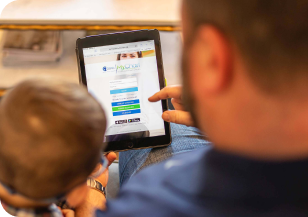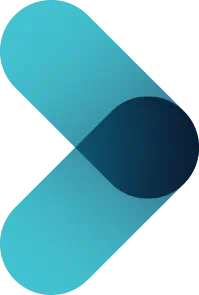GIVE NOW before 2025 ends—your gift will be doubled to help children in need. Click here to 2x your impact!

Ranked nationally in pediatric care.
Arkansas Children's provides right-sized care for your child. U.S. News & World Report has ranked Arkansas Children's in seven specialties for 2025-2026.

It's easier than ever to sign up for MyChart.
Sign up online to quickly and easily manage your child's medical information and connect with us whenever you need.

We're focused on improving child health through exceptional patient care, groundbreaking research, continuing education, and outreach and prevention.

When it comes to your child, every emergency is a big deal.
Our ERs are staffed 24/7 with doctors, nurses and staff who know kids best – all trained to deliver right-sized care for your child in a safe environment.

Arkansas Children's provides right-sized care for your child. U.S. News & World Report has ranked Arkansas Children's in seven specialties for 2025-2026.

Looking for resources for your family?
Find health tips, patient stories, and news you can use to champion children.

Support from the comfort of your home.
Our flu resources and education information help parents and families provide effective care at home.

Children are at the center of everything we do.
We are dedicated to caring for children, allowing us to uniquely shape the landscape of pediatric care in Arkansas.

Transforming discovery to care.
Our researchers are driven by their limitless curiosity to discover new and better ways to make these children better today and healthier tomorrow.

We're focused on improving child health through exceptional patient care, groundbreaking research, continuing education, and outreach and prevention.

Then we're looking for you! Work at a place where you can change lives...including your own.

When you give to Arkansas Children's, you help deliver on our promise of a better today and a healthier tomorrow for the children of Arkansas and beyond

Become a volunteer at Arkansas Children's.
The gift of time is one of the most precious gifts you can give. You can make a difference in the life of a sick child.

Join our Grassroots Organization
Support and participate in this advocacy effort on behalf of Arkansas’ youth and our organization.

Learn How We Transform Discovery to Care
Scientific discoveries lead us to new and better ways to care for children.

Learn How We Transform Discovery to Care
Scientific discoveries lead us to new and better ways to care for children.

Learn How We Transform Discovery to Care
Scientific discoveries lead us to new and better ways to care for children.

Learn How We Transform Discovery to Care
Scientific discoveries lead us to new and better ways to care for children.

Learn How We Transform Discovery to Care
Scientific discoveries lead us to new and better ways to care for children.

Learn How We Transform Discovery to Care
Scientific discoveries lead us to new and better ways to care for children.

When you give to Arkansas Children’s, you help deliver on our promise of a better today and a healthier tomorrow for the children of Arkansas and beyond.

Your volunteer efforts are very important to Arkansas Children's. Consider additional ways to help our patients and families.

Join one of our volunteer groups.
There are many ways to get involved to champion children statewide.

Make a positive impact on children through philanthropy.
The generosity of our supporters allows Arkansas Children's to deliver on our promise of making children better today and a healthier tomorrow.

Read and watch heart-warming, inspirational stories from the patients of Arkansas Children’s.

Hello.

Arkansas Children's Hospital
General Information 501-364-1100
Arkansas Children's Northwest
General Information 479-725-6800


The Best Tips for Preventing and Managing Low Blood Sugar in Children and Teens
Published date: September 27, 2019
Updated date: May 23, 2024
Hypoglycemia can cause a number of different symptoms (detailed below), some of which may require medical attention if left untreated. However, with proper planning, low blood sugar can be managed and even prevented in most cases.
Causes of Low Blood Sugar
Hypoglycemia, or a blood sugar level that has dropped to 70 milligrams per deciliter (mg/dL) or lower, can be caused by a variety of different factors. Some of these include:
- Missing meals or snacks
- Taking too much insulin
- Taking the wrong type of insulin
- Taking an insulin dosage at the wrong time
- Increased physical activity
How and when insulin is injected is an important factor to make note of as this can make a hypoglycemic episode more likely. For example, taking a hot shower or bath right after an injection, or injecting directly into a muscle instead of the fatty layer under the skin can cause insulin to be absorbed more quickly than usual, potentially leading to low blood sugar.
Symptoms of Low Blood Sugar
Much like the causes, there are many symptoms that could be a sign of hypoglycemia. Morgan Butler, a Certified Diabetes Care and Education Specialist at the Arkansas Children's Diabetes Center, advises parents, teachers, coaches and other caretakers of children to be aware of the following:
- Headache
- Sweating
- Shakiness or tremors
- Irritability or personality changes
- Weakness
- Confusion
- Faster heartbeat
If left untreated, low blood sugar can eventually lead to more serious symptoms such as loss of consciousness, seizure or convulsions.
"It’s very important that if a child exhibits the signs of low blood sugar, we check and treat it immediately," Butler said. "Otherwise, it can become extremely severe."
Treating Low Blood Sugar
Some people, especially children may not realize they are displaying the symptoms of low blood sugar so it’s important for parents and caregivers to check glucose levels often as a precautionary measure. Any blood sugar level that is less than 70 mg/dL or lower, determined through a finger stick or continuous glucose monitor, should be treated. Using the ""rule of 15,"" Butler suggests giving a child 15 grams of a fast-acting carbohydrate in the event of low blood sugar. "We want something that the body can get to and quickly metabolize to bring that blood sugar up," Butler said. "Two rolls of Smarties, four or five ounces of juice or regular soda and glucose tablets are all easy ways to get the blood sugar back to where it needs to be."
After eating or drinking the fast-acting carbohydrates, children should wait 15 minutes and then re-check the blood sugar level. This is important to determine if the blood sugar level is increasing and not continuing to fall. Once the blood sugar level rises above 70mg/dL, children should have another snack that includes complex carbs and proteins such as a handful of almonds, yogurt with fruit or apples with peanut butter.
"The fast-acting carb gets the blood sugar up quickly, but then we need something to stabilize it so that the body doesn’t burn up that sugar too quickly," Butler said.
In the event that a hypoglycemic episode has led to a seizure or unconsciousness, a glucagon injection is necessary to get the blood sugar back to an appropriate level. For children with diabetes, Butler suggests keeping a "go bag" at all times, which contains diabetes equipment as well as snacks and a glucagon kit to treat low blood sugar. Any adult providing care for a child should know how to administer the glucagon shots in case of an emergency.
Preventing Low Blood Sugar
Glucose is the main source of energy for the body, and food is the fuel. Encouraging children to choose the best fuel by sticking to a balanced, healthy diet is one of the most effective ways to prevent a hypoglycemic episode. Here are a few important guidelines to prevent low blood sugar:
- Limit sugary drinks (unless treating low blood sugar)
- Limit concentrated sweets to once per day
- Eat nutritious meals three times per day
- Be aware of exercise guidelines before a child participates in a sport or other physical activity.
- Eat a snack before engaging in physical activity to help keep the blood sugar at its appropriate level

Appointments
New and existing patients can visit our appointment hub for several ways to request an appointment, including online scheduling for many services.
Request an appointment

